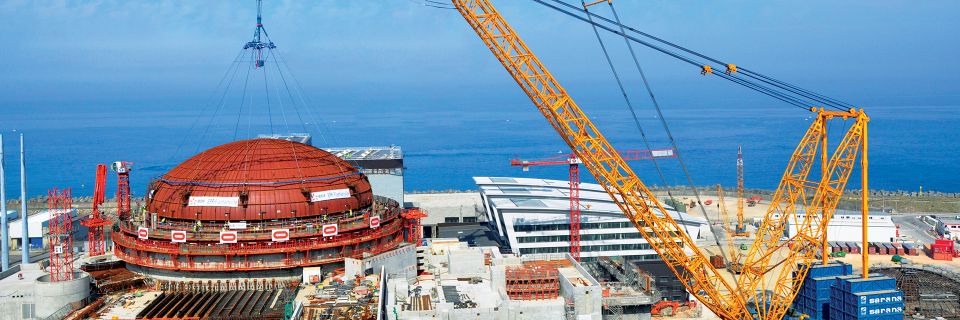Currently, Russia supplies about 44 percent of global uranium enrichment services and about 20 to 30 percent of enriched uranium used in the United States and Europe. Just over one year ago, on April 16, 2023, the United States, Canada, France, Japan, and the United Kingdom—which collectively make up half of the world’s uranium conversion and enrichment capacity—announced they had created a strategic partnership to secure nuclear fuel supply chains while sidelining Russia. What has happened in the year since?
One of the “Sapporo 5”: The five nations that held an April 2023 press conference on the sidelines of the G7 Ministers’ Meeting on Climate, Energy, and Environment in Sapporo, Japan, were inspired by “Russia’s unprovoked and unjustifiable war against Ukraine and the increasing impacts of climate change have fundamentally altered the global energy landscape and accelerated the need for collaboration between like-minded allies.”
Those same nations—the United States, the United Kingdom, France, Japan, and Canada—now united in their nuclear fuel goals as the “Sapporo 5”—met again on the margins of COP28 in the United Arab Emirates last December 7 to announce a commitment to collectively mobilize and invest a combined $4.2 billion to expand enrichment and conversion capacity over the next three years. That latest announcement followed a high-profile December 5 pledge by 22 countries to triple nuclear energy capacity globally by 2050.
One year’s progress: According to Kathryn Huff, assistant secretary of nuclear energy, the Sapporo 5 have already met that funding commitment.
- In the U.S.: In October 2023, President Biden requested $2.16 billion in supplemental funding to encourage investment in domestic enrichment capabilities for low-enriched uranium, including HALEU. Congress ultimately appropriated $2.72 billion on March 8 for the Department of Energy to carry out the Nuclear Fuel Security Act of 2023 by establishing or expanding uranium enrichment and conversion while working with U.S. allies and partners. Those funds were contingent on a ban on Russian uranium imports that is currently being considered by Congress.
- Allied nations: Huff notes that in October 2023, Orano’s board of directors approved a $1.8 billion investment to increase the enrichment capacity of the Georges Besse-2 facility in southern France by 30 percent by 2028 to help meet fuel demand for the current reactor fleet. Japan committed to increase enrichment from 75 tons to 450 tons per year by 2027, while the United Kingdom announced a £300 million investment (about $375 million) to launch a domestic HALEU program, and Canada continues to mine and convert uranium.
- HALEU production: Centrus’s American Centrifuge Project began HALEU enrichment in October 2023 in Piketon, Ohio, and by November 2023 had delivered the first 20 kg of HALEU under contract to the DOE. Since then, Centrus has produced over 100 kg of HALEU, according to the DOE.
What’s ahead? The Sapporo 5 plan to meet again ahead of the IAEA General Conference in September to set new goals, according to the DOE. In the meantime, the U.S. government and supply chain entities are continuing to mark progress.
- Action on RFPs: Two requests for proposals were issued for HALEU enrichment and deconversion contracts that would be funded with the $700 million provided for the DOE’s HALEU Availability Program under the Inflation Reduction Act. Both the deconversion RFP, released in November 2023, and the enrichment RFP, released in January, are now closed to submissions. Announcements are expected “later this summer,” according to Huff.
- HALEU enrichment continues, slower than expected: The HALEU Demonstration Program contract between Centrus and the DOE called for the production of 900 kg during 2024. That goal will likely not be reached—as Centrus announced in February—because of a lack of containers ready to receive the HALEU output. The DOE is required to supply storage cylinders, but “supply chain challenges have created difficulties for the DOE in securing 5B cylinders for the entire production year,” according to Centrus.







